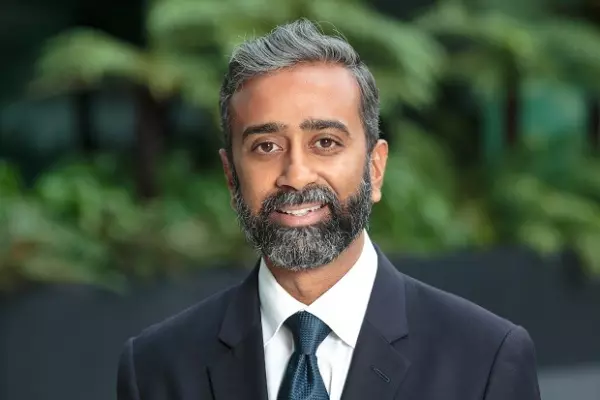There's been widespread coverage of the staffing crisis gutting New Zealand’s health system, with health minister Andrew Little lashing out like an angry possum caught in its headlights.
But there's another escalating dispute unfolding that's flown under the radar.
This dispute is between general practices and the government. At its heart is how the around 1,100 privately owned general practices are funded for supplying primary healthcare.
This dispute is critically important because these practices provide most of our primary healthcare in NZ.
In broad terms, there are two ways these general practices can be funded in universal public health systems.
- One is by a fee-for-service, where payment is made based on services supplied to patients. It's a demand-driven system that does not lend itself to fiscal discipline.
- The other is 'capitation', where practices are paid a fixed sum, no matter how many services they provide.
How capitation arrived
Before 2000, fee-for-service was dominant, but voluntary capitation was slowly growing, with many general practices receptive to the idea.
Under Annette King’s health portfolio watch, capitation became the funding system. By the early 2000s, it was broadly welcomed by practices.
In a capitation system, the Ministry of Health allocates money to the 20 district health boards (DHBs), which are due to be replaced by Health NZ on 1 July.
The DHBs then pass it on to the 30 primary health organisations (PHOs) around the country. Around 94% of New Zealanders are enrolled in PHOs. Finally, PHOs further divvy up the funding they receive to the general practices they cover.
Capitation payments are based on how many patients are enrolled in PHOs. This means that PHOs and their general practices are paid according to the number of people enrolled, not the number of times a provider sees patients.
Adjustments are made to capitation levels by gender (because women live longer) and age.
Capitation is the main source of income for practices, but they can supplement it with patient co-payments. These co-payments can be reduced for low-income earners. The government, in effect, also sets maximum limits on the level of co-payments.
The capitation system is actually more complex than I've described, but you get the drift.
Capitation’s development
For the first few years, the practice was for capitation funding to increase by around the same percentage as the DHBs received for their total annual funding.
There was a crude logic behind this and it worked well, in a kind of, sort of way, because for much of the 2000s, funding was higher in relative terms.
Meanwhile, Sapere consultants were commissioned to develop a method for calculating what a reasonable annual co-payment increase should be.
In one of the longer titles in the health system (there's strong competition), this became known as the ‘Annual Statement of Reasonable Fee Increase’.
Later, this system also became the practice for working out annual capitation increases. This, along with the less favourable ‘light austerity’ health funding of the 2010s, has led to growing frustration for GPs and their general practice representatives.
Deficiencies in the system
What is critical to understanding how the capitation system worked is that key decisions, including the Sapere methodology, were not the result of a negotiated agreement with GP representatives.
Over time, a process was developed but it was consultative at best. Key decisions were made by the DHBs but they were acting on behalf of the crown, which ultimately called the shots.
There are flaws in the Sapere methodology.
To start with, there's a time lag between the calculation and when the increase takes effect. It also doesn't account for ‘shocks’ like the effects of the pandemic or sudden leaps in the cost of supplies.
The methodology is really a blunt instrument that doesn't properly recognise specific non-salary medical costs.
What's more, it uses the official Labour Cost Index for employee costs. The problem with that is the index is far too broad to capture the specific remuneration costs of GPs, nurses and other practice staff.
Dispute escalation
The process of consultation has evolved over time into a forum.
It's made up of the crown (Health NZ from July) and the ‘contracted providers caucus’ made up of the Royal NZ College of General Practitioners, General Practice Owners Association (GenPro) and the Rural Doctors Network. The NZ Medical Association is also there but will soon be wound up. The health ministry is also present as an “observer”.
General practices increasingly found themselves in a bind. On the one hand, the outcomes of the process didn't properly cover their full costs. But, on the other hand, the system meant you couldn't offset this loss by increasing co-payments.
This deteriorating situation has come to a head.
The Sapere methodology calculated an increase of 2.7%. In a moment of what it saw as generosity, the crown, through the DHBs, increased this to 3%.
Faced with the reality of nearly 7% inflation, the response of general practices has been one of shock and anger.
Now, unless commonsense prevails, there will be a standoff that will probably lead to either practices restricting the level of patient care that they can afford to provide (leaving unmet healthcare needs) or increasing patient co-payments (which risks further conflict with the government).
It might also be a combination of both.
We need pragmatism and realism to resolve this escalating dispute. But, unless this happens soon, we will have a further escalation. This will be damaging to ongoing relationships and trust and confidence in the system.
But there is a more important issue. Capitation, in principle, is a sound system. But implementing it should not be left to a process of consultation.
There needs to be a negotiating process where Health NZ and the general practice representatives agree.
This negotiating process should include tailored ways of calculating practice costs. It should also offer a dispute resolution mechanism for times when an agreement can’t be reached.














